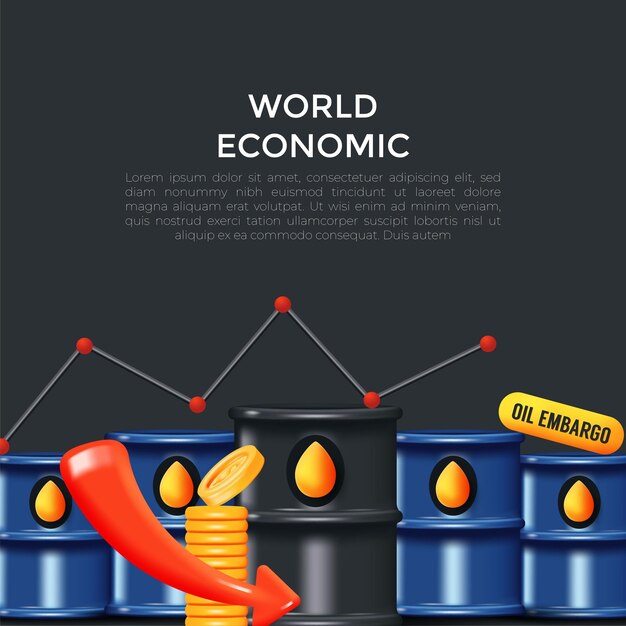Ethereum Price Prediction 2025 – 2030: Analyzing ETH Price Trends and Forecasting Future Growth
When it comes to the world of digital currency, there is one asset that has captured the attention of investors, technology enthusiasts, and financial experts alike. This revolutionary blockchain-based platform, often referred to as the “crypto giant,” has been making waves in the financial industry, transforming the way we think about transactions and contracts.
As the crypto market continues to evolve, it is natural for investors and enthusiasts to wonder what the future holds for this groundbreaking technology. What are the potential outcomes and projections for this digital asset, and how can we make sense of the various opinions and perspectives? To shed light on this matter, we turn to the insight and analysis provided by industry professionals.
In this article, we delve into the predictions and forecasts for the future of Ethereum, exploring the potential pathways and scenarios that lie ahead for this disruptive digital currency. While exact predictions are impossible to determine, the analysis provided by these professionals allows us to gain valuable insights into the potential outcomes and impacts of Ethereum in the coming years.
While it is crucial to note the inherent uncertainties that come with predicting the future of a rapidly evolving technology, the diverse range of insights and opinions offered by experts in the field can help guide our understanding and decision-making process. By exploring these perspectives, we can gain a clearer understanding of the various factors that may shape the future trajectory of Ethereum, and potentially, the broader landscape of digital currencies.
The Potential for Ethereum’s Price to Soar in the Coming Years
In this section, we will explore the tremendous growth potential of Ethereum’s value in the upcoming years by analyzing various factors influencing the cryptocurrency market.
With the ever-increasing popularity of decentralized finance (DeFi) and digital assets, Ethereum has emerged as a leading player in the blockchain industry. Its revolutionary smart contract capabilities and robust infrastructure have positioned it as a key platform for building decentralized applications (dApps) and conducting secure and transparent transactions.
One of the key factors contributing to Ethereum’s potential for substantial price appreciation is its limited supply. Similar to Bitcoin, Ethereum operates on a fixed supply model, which means that the available number of coins is finite. As demand for Ethereum and its utility grows, the scarcity of available coins could contribute to a significant increase in its price.
Furthermore, Ethereum’s upgrade to Ethereum 2.0 is expected to be a major catalyst for its price growth. This upgrade aims to enhance scalability, security, and sustainability, ultimately making Ethereum more efficient and user-friendly. The successful implementation of Ethereum 2.0 could attract a wider range of users and investors, further driving up its value.
The widespread adoption of Ethereum by institutional investors and major corporations is another factor that could propel its price to new heights. As more traditional financial entities recognize the potential of decentralized technologies, they are likely to allocate a portion of their funds towards Ethereum, increasing its demand and consequently its price.
The rapidly expanding DeFi ecosystem is yet another driver for Ethereum’s price surge. DeFi platforms built on the Ethereum blockchain are revolutionizing various sectors, from lending and borrowing to decentralized exchanges and yield farming. As the value and utility of these projects grow, so does the demand for Ethereum, contributing to its upward price trend.
Moreover, global economic uncertainties and inflation concerns have led many individuals and institutions to seek alternative investment options. As a digital store of value, Ethereum has gained attention as a potential hedge against inflation and economic instability. As more individuals allocate their funds towards Ethereum as a long-term investment, its price is likely to experience a significant boost.
In conclusion, with its technological advancements, limited supply, upcoming upgrades, institutional adoption, and the rapid growth of the DeFi ecosystem, Ethereum possesses immense potential to experience a substantial price surge in the coming years. However, it’s important to note that cryptocurrency markets are subject to volatility, and investment decisions should be made with careful consideration and risk management strategies.
Factors Influencing the Price of Ethereum and How They Are Predicted
Understanding the various factors that have an impact on the price of Ethereum and the methods used to predict these changes is crucial for investors and enthusiasts of this popular cryptocurrency. By analyzing a range of factors and implementing predictive models, experts can forecast potential price movements and provide insights into the future market trends of Ethereum.
Market Demand and Supply Dynamics
One of the primary factors influencing the price of Ethereum is the interaction between market demand and supply dynamics. When the demand for Ethereum increases, driven by factors such as increased adoption, technological advancements, or market trends, the price tends to rise. Conversely, when the supply of Ethereum surpasses the demand, the price is likely to experience a decline.
The prediction of market demand and supply dynamics is a complex task that entails monitoring various indicators, including user adoption rates, transaction volumes, liquidity, and market sentiment. By analyzing these indicators and applying statistical models, experts can make informed predictions regarding the future price movements of Ethereum.
Technological Developments and Upgrades
The continuous development and upgrades of the Ethereum blockchain play a significant role in shaping its price. Advances in Ethereum’s technology, such as improvements in scalability, security, and new functionalities, can increase its desirability and overall market value. Conversely, any technical issues or vulnerabilities discovered may have a negative impact on the price.
To predict the influence of technological developments on Ethereum’s price, experts closely monitor the project’s roadmap, developer activity, and partnerships. By assessing the potential impact of upcoming upgrades and analyzing the response from the community, predictions can be made regarding the effect on the price of Ethereum.
Market Sentiment and External Factors
Market sentiment and external factors, such as regulatory changes, geopolitical events, and economic conditions, can significantly impact the price of Ethereum. Investor sentiment and overall market sentiment towards cryptocurrencies can result in rapid price fluctuations. Additionally, government regulations and policies, both positive and negative, can affect the perceived value and adoption of Ethereum.
To predict the influence of market sentiment and external factors, experts analyze news trends, social media sentiment, economic indicators, and regulatory developments. By gauging the potential impact of these factors on Ethereum’s price, predictions can be made to aid investors in making informed decisions.
In conclusion, the price of Ethereum is influenced by various factors, including market demand and supply dynamics, technological developments, and external factors such as market sentiment and regulations. Predicting the future price of Ethereum requires careful analysis of these factors and the application of predictive models to provide meaningful forecasts for investors and enthusiasts.
Expert Opinion: Why Some Believe Ethereum Will Outperform Bitcoin
When exploring the potential of the cryptocurrency market, there is a growing belief among experts that Ethereum has the potential to surpass Bitcoin in terms of performance and growth. This belief stems from various factors and unique characteristics intrinsic to Ethereum, which make it a compelling choice for investors.
One key aspect that sets Ethereum apart is its adaptable and innovative blockchain technology. Unlike Bitcoin, Ethereum’s blockchain provides a platform for developers to create and execute decentralized applications (dApps) and smart contracts, expanding its utility beyond a mere digital currency. This flexibility has attracted a significant number of developers and businesses, leading to an ever-increasing ecosystem built on top of Ethereum.
Furthermore, Ethereum’s focus on scalability and future upgrades has garnered the attention and confidence of many experts. The upcoming switch from a proof-of-work (PoW) consensus mechanism to a proof-of-stake (PoS) approach through Ethereum 2.0 is seen as a significant catalyst for its potential growth. This transition is expected to enhance transaction speed and reduce energy consumption, addressing one of the major concerns associated with traditional blockchain networks.
Another factor contributing to the belief in Ethereum’s outperformance is its ability to support a wide range of decentralized finance (DeFi) applications. DeFi has gained considerable traction in recent years, offering an alternative financial system with increased accessibility and transparency. With its strong support for DeFi projects and protocols, Ethereum has established itself as the preferred platform for this rapidly expanding sector, further solidifying its value proposition.
It is also worth noting that Ethereum holds a strong foothold in the initial coin offering (ICO) market. Many successful projects have chosen Ethereum’s platform to conduct their token sales, showcasing the trust and confidence placed in the network by both startups and investors. This trend has not only bolstered Ethereum’s position but has also established it as a fundamental player in the overall blockchain and cryptocurrency industry.
In conclusion, while Bitcoin remains the most well-known and dominant cryptocurrency, Ethereum’s unique features and growing ecosystem have led experts to believe in its potential to outperform Bitcoin. Its adaptable blockchain technology, upcoming upgrades, strong support for DeFi, and significant role in ICOs all contribute to this optimistic outlook. As the cryptocurrency market continues to evolve, Ethereum’s distinctive qualities position it as a promising contender in the race for crypto dominance.
Ethereum’s Usage and Adoption Rates: How They Impact Price Projections
The level of usage and adoption of Ethereum has a significant influence on the forecasts and projections made regarding its price in the future. The way in which Ethereum is utilized and embraced by individuals, businesses, and industries can greatly impact its market value and potential growth.
As Ethereum gains popularity and wider acceptance, more people are likely to invest in it, which can lead to an increase in its demand and subsequently its price. This rise in usage and adoption can be driven by various factors such as the development of decentralized applications (DApps) on the Ethereum blockchain, the integration of Ethereum into existing platforms, and the utilization of Ethereum for smart contracts.
When Ethereum is extensively used for DApps, it showcases its potential to revolutionize industries and provide solutions to existing challenges. Increased adoption in industries such as finance, supply chain management, and healthcare can further strengthen the demand for Ethereum and positively impact its price projections.
Additionally, as more businesses and organizations recognize the benefits of utilizing Ethereum’s blockchain technology, they may choose to incorporate it into their operations. This integration can lead to increased usage of Ethereum and create a network effect, where the value of Ethereum is enhanced by its widespread adoption and utilization within different sectors.
It is important to monitor and analyze the usage and adoption rates of Ethereum to make more accurate price predictions. By assessing the growth in user activity, transaction volumes, and the number of active Ethereum addresses, experts can better assess the trends and patterns that influence Ethereum’s price dynamics.
Overall, the level of Ethereum’s usage and adoption plays a crucial role in determining its future price movements. As Ethereum continues to be utilized and embraced by individuals and businesses worldwide, its potential for long-term success and price appreciation remains high.
The Role of Decentralized Finance (DeFi) in Ethereum’s Price Forecast
The significance of Decentralized Finance (DeFi) within the projection of Ethereum’s future valuation is paramount. As the popularity and adoption of DeFi applications grow, they are poised to play a pivotal role in shaping the trajectory of Ethereum’s price, embodying the principles of decentralization, transparency, and financial inclusivity.
Unlocking New Possibilities for Economic Empowerment
DeFi brings forth a paradigm shift in the traditional financial landscape by providing a permissionless and trustless environment for users to interact with various financial services. The emergence of decentralized lending, borrowing, and yield farming has the potential to empower individuals, eliminate intermediaries, and ultimately democratize access to financial opportunities. This shift towards a more open and inclusive financial ecosystem can foster increased demand for Ethereum and drive its price upwards.
Creating a Foundation for Innovation and Growth
By enabling the creation and execution of smart contracts, Ethereum serves as the backbone for the development of DeFi applications. These applications, built on Ethereum’s blockchain, offer a wide range of use cases, from decentralized exchanges and stablecoins to prediction markets and insurance platforms. The innovative nature of DeFi attracts a thriving community of developers and entrepreneurs who continuously build and expand the possibilities within this ecosystem. As the DeFi space flourishes, it is expected to contribute positively to Ethereum’s market value, propelling its price to new heights.
Risks and Challenges that Could Impact the Trajectory of Ethereum’s Valuation
Within the realm of Ethereum’s valuation, there exist various risks and challenges that have the potential to exert an influence on its future trajectory. Understanding these factors is crucial for investors and enthusiasts alike in order to make informed decisions and anticipate possible scenarios that may impact the price dynamics of Ethereum.
1. Regulatory Uncertainty:
One significant challenge that Ethereum faces is the evolving landscape of cryptocurrency regulations worldwide. Regulatory actions or lack thereof can significantly impact the sentiment surrounding Ethereum, potentially causing market fluctuations. Ambiguous regulations might discourage investors, impede adoption, and even hinder the development of decentralized applications (dApps) built on the Ethereum network.
2. Scalability Concerns:
Another prominent challenge is Ethereum’s scalability. As the demand for blockchain technology and decentralized applications grows, the limitations of Ethereum’s current infrastructure may hinder its ability to handle a larger number of transactions effectively. Scalability concerns can lead to network congestion, increased transaction costs, and a potential decline in user experience, potentially affecting investor confidence and the long-term valuation of Ethereum.
3. Competition from Alternative Platforms:
The rise of alternative blockchain platforms poses a significant risk to Ethereum’s dominance. Competing platforms that offer faster transactions, lower fees, or enhanced features could attract both developers and users, potentially diverting attention and investment away from Ethereum. Increased competition can challenge Ethereum’s market share and potentially impact its long-term valuation.
4. Technological Limitations and Upgrades:
Ethereum, being an evolving technology, undergoes regular upgrades to address its limitations. However, these upgrades may introduce unforeseen challenges and technical complexities. The implementation of major upgrades like Ethereum 2.0, which aims to transition to a more scalable and energy-efficient network through the introduction of Proof of Stake (PoS), could face delays or encounter technical difficulties. Such challenges might influence market sentiment and, consequently, the valuation of Ethereum.
To navigate the Ethereum market effectively, investors need to carefully consider and monitor these risks and challenges. Understanding the potential impact of regulatory actions, scalability concerns, competition from alternative platforms, and technological limitations is crucial to make informed decisions in the ever-changing landscape of Ethereum’s valuation.
FAQ: Ethereum eth price predictions
What are some expert predictions for the future price of Ethereum (ETH)?
According to the article, some experts predict that the price of Ethereum (ETH) will continue its upward trend and may reach new all-time highs in the future. However, the specific price predictions vary, with some experts suggesting a range of $5,000 to $10,000 per ETH while others believe it could even surpass $20,000.
What are the factors influencing the future price of Ethereum (ETH)?
The expert forecasts in the article mention several factors that can impact the future price of Ethereum (ETH). These factors include the overall market sentiment towards cryptocurrencies, adoption and usage of the Ethereum network, technological advancements, regulatory developments, and the level of competition from other blockchain platforms.
Why do some experts believe Ethereum (ETH) will reach new all-time highs?
Some experts in the article believe that Ethereum (ETH) will reach new all-time price highs due to its growing popularity and adoption. They argue that as more decentralized applications (dApps) are built on the Ethereum network and more people use ETH for various purposes, the demand for the cryptocurrency will increase, thus driving up its price.
Are there any potential risks or challenges that may affect the future price of Ethereum (ETH)?
Yes, the article highlights that there are potential risks and challenges that could impact the future price of Ethereum (ETH). These include scalability issues and high transaction fees on the Ethereum network, regulatory uncertainties surrounding cryptocurrencies, security vulnerabilities, and the emergence of competing blockchain platforms that could attract users and developers away from Ethereum.
Is it advisable to invest in Ethereum (ETH) based on these price predictions?
The decision to invest in Ethereum (ETH) should not be solely based on price predictions mentioned in the article. Investing in cryptocurrencies carries risks and it is important to conduct thorough research, consider one’s own risk tolerance, and seek professional advice if needed. It is also important to remember that the cryptocurrency market is highly volatile, and prices can fluctuate significantly in a short period of time.
What are the current Ethereum price predictions?
According to experts, the current Ethereum price predictions vary. Some forecasters believe that Ethereum’s price will reach a new all-time high of $10,000 by the end of the year, while others are more conservative and predict a price range of $3,000 to $5,000.
What significant event occurred in April 2024 that impacted Bitcoin’s supply dynamics?
The Bitcoin halving event occurred in April 2024, reducing the rate at which new bitcoins are generated by half.
How does technical analysis help investors understand market trends and predict price movements?
Technical analysis involves studying historical market data, such as price and volume, to identify patterns and trends that may indicate future price movements.
What factors contribute to the bullish sentiment in the cryptocurrency market?
Factors such as increasing adoption, institutional interest, positive regulatory developments, and improving technology can contribute to bullish sentiment in the cryptocurrency market.
How does market capitalization reflect the overall value and size of a cryptocurrency?
Market capitalization is calculated by multiplying the current price of a cryptocurrency by its total circulating supply, providing an estimate of the total value of all coins in circulation.
What role do NFTs play in the cryptocurrency market?
Non-fungible tokens (NFTs) have gained popularity for their ability to represent unique digital assets, such as artwork, collectibles, and virtual real estate, on blockchain platforms.
How did Ethereum’s price perform in 2023 compared to previous years?
In 2023, Ethereum’s price experienced significant growth, outperforming its performance in previous years.
How might technical analysis suggest potential price movements when examining Ethereum’s price in 2025?
Technical analysis of Ethereum’s price in 2025 may reveal patterns or indicators that could signal potential price movements, such as support and resistance levels or moving averages.
What impact did the Bitcoin halving event in 2020 have on its price in 2026?
The Bitcoin halving event in 2020 reduced the rate of new supply entering the market, which, combined with increasing demand, contributed to a bullish trend in Bitcoin’s price in 2026.
How might changes in market capitalization reflect shifts in investor sentiment and confidence?
Increases in market capitalization may indicate growing investor confidence and positive sentiment toward a cryptocurrency, while decreases may suggest the opposite.
What potential price scenarios may arise for cryptocurrencies in 2030 based on historical trends and current market dynamics?
Based on historical trends and current market dynamics, potential price scenarios for cryptocurrencies in 2030 could vary widely, ranging from continued growth and adoption to periods of volatility and correction.
What factors influence the average price of Ethereum?
The average price of Ethereum is influenced by various factors including market demand, investor sentiment, technological advancements, and regulatory developments.
How is the value of Ethereum calculated?
The value of Ethereum is calculated by multiplying the current price of Ether (ETH) by the total circulating supply of ETH tokens.
What role does a validator play in the Ethereum network?
A validator in the Ethereum network is responsible for validating transactions and securing the network by participating in the consensus mechanism.
How does Ethereum Go about creating a new block in its blockchain?
Ethereum creates a new block in its blockchain through a process called mining, where miners compete to solve complex mathematical puzzles to add new transactions to the blockchain.
What is Ethereum 2.0 and how does it aim to improve the Ethereum network?
Ethereum 2.0 is an upgrade to the Ethereum network that transitions it from a proof-of-work to a proof-of-stake consensus mechanism, aiming to improve scalability, security, and energy efficiency.
What is the current price of Ethereum in real-time?
The current price of Ethereum can be found on cryptocurrency exchanges and market data websites, providing real-time updates on its price fluctuations.
How does the price of Ethereum compare to that of Bitcoin?
The price of Ethereum, as the second-largest cryptocurrency, can be compared to that of Bitcoin, the largest cryptocurrency, to assess relative performance and market dynamics.
What long-term price predictions have crypto experts provided for Ethereum by the end of 2025?
Crypto experts have analyzed Ethereum’s potential growth and market trends to provide long-term price predictions, suggesting where its price might be by the end of 2025.
How does the transition to the proof-of-stake consensus mechanism in Ethereum 2.0 impact its future price predictions?
The transition to the proof-of-stake consensus mechanism in Ethereum 2.0 is expected to affect its future price predictions, with some analysts forecasting positive price movements as a result of improved scalability and efficiency.
What terms of the agreement are included in Ethereum ETFs?
Ethereum ETFs typically include terms outlining the investment objectives, fees, risks, and management of the fund, providing investors with exposure to Ethereum’s price movements without directly owning the cryptocurrency.








No responses yet